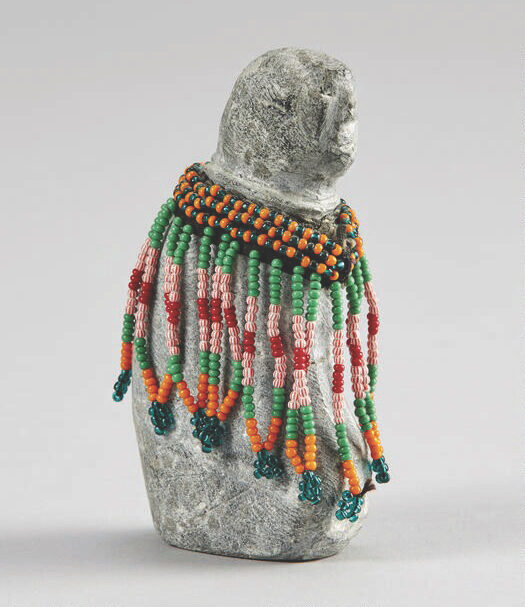“Objects and the Stories They Tell”: Arctic Museum exhibit takes a deeper look at the development of its collection
February 9, 2024
 Courtesy of Peary-MacMillan Arctic Museum
Courtesy of Peary-MacMillan Arctic MuseumThe stories behind objects displayed in museums are often lost along their journeys through time. The Peary-MacMillan Arctic Museum (PMAM) wants to change that.
“Collections and Recollections: Objects and the Stories They Tell” will be shown in the PMAM’s third-floor gallery until June 1, 2025. The intention behind the exhibit is to bring awareness to the origins of objects in the museum’s collection. Curator Genny LeMoine said in an interview with the Orient that nearly all of the objects in “Collections and Recollections” are gifts to the PMAM.
“We wanted to give credit to all the donors. We always acknowledged them, but [we want] to make it more evident that so much of our collection is built on donations,” she said.
In the past few decades, the museum’s collection of modern Inuit art has grown, largely due to a donation from Robert and Judith Toll in 2009 that gave the PMAM access to over 600 pieces of Inuit art. After this contribution, LeMoine said other collectors were inspired to donate their pieces as well.
“[The Toll donation was] important to us, because it lets us talk about contemporary [Arctic] culture,” LeMoine said.
She noted that Inuit art didn’t begin to garner attention in the art market until the 1950s when Arctic people were forced into communities where they could not follow their traditions as closely, and their usual sources of income were unavailable. In place of hunting or fishing, LeMoine said many turned to art to support themselves.
“For a lot of people, [making art] worked out, and there continued to be a fair number of pretty successful [Inuit] artists,” she said. “It’s a very interesting story about cultural change and economic change, and it’s just fantastic work as well.”
Cultural Property Security Supervisor Richard Brunck has enjoyed being a part of the museum’s staff for around a year now.
“I just think it’s great,” he said. “They do a great job acknowledging Inuit history but also showing a glimpse into their present lives.”
“And the potential for the future,” Megan Gaudrealt, another security officer at PMAM, added.
The exhibit is a part of the museum’s broader goal of making the historical significance of these objects more well known along with embracing and appreciating Indigenous culture.
“Because [PMAM namesake Donald] MacMillan was very interested in Inuit culture, there was a fair bit [in the collection] from the photographs he had taken and the things he had collected. But it was still a museum about two white men,” LeMoine said, referencing MacMillan and Robert Peary. “When [PMAM Director] Susan Kaplan came and the museum started to grow, she felt strongly that we needed to have Alaska represented.”
Kaplan, who directs the College’s Arctic Studies program, fought for more representation of native Alaskan objects and stories. Now the museum’s collection has continued to grow, including a recent donation of some Alaskan artifacts and about 5,000 photographs that Kaplan took while working in the state in the 1970s and 80s.
Museum staff were faced with the challenge of imagining what the collection would look like in the PMAM’s new space, as it moved from Hubbard Hall to the John and Lile Gibbons Center for Arctic Studies in the spring of 2023.
“It’s much more open [here],” LeMoine said. “It gives the objects more space to breathe, and in the end, it’s going to be very flexible. The way [Gibbons] is built, you can make it look really different every time we do a new exhibit.”
LeMoine appreciates that unique items can appear seemingly at random and add a whole new dimension to the museum’s collection.
“We call it ‘serendipity,’ things that just come together sometimes quite surprisingly,” LeMoine said.
One of LeMoine’s personal favorite pieces in the collection is a necklace crafted from a single piece of walrus ivory by an Inuk man named Qaavigaq. The plaque notes that by the time the item had made its way to the museum, its story had been long forgotten–until a chance encounter reunited Qaavigaq’s family with the piece.
“[Qaanvigaq] and his wife Amaunalik worked with MacMillan in 1924. In 2001, I had some Inuit elders here looking at the collection,” she said. “I took them into the collections room, and we were opening cases and looking at things, and as soon as we opened the door for that [piece], Balika and Navarana, their daughters, said ‘Our father made that!’”
To have connected someone with a unique item of their family’s is amazing to LeMoine and reminds curators and visitors alike why the focus of the exhibit remains on the stories.
“When we get a donation, it’s not just the thing we get, but the story that comes with it that is really important to us as well,” LeMoine said.

Comments
Before submitting a comment, please review our comment policy. Some key points from the policy: